Emergency Preparedness
Emergency Preparedness
Handling Emergencies
Regardless of the type of emergency in progress, you may call 911 and/or sound the fire alarm immediately. Remain calm, notify others, and respond to the emergency as appropriate. Do not attempt to handle any emergency situation in which you do not have training (e.g., fire fighting, first aid, spill response, etc.).
IMPORTANT!
Call 911 and/or pull the fire alarm whenever a situation poses immediate danger to people, property, or process.
When you call to report an emergency, provide the operator with the following information:
- Building or area name
- Location
- Brief description of the emergency
- Your name
- A return contact phone number
Emergency Call Box
Attached to the building at the end of the Left Wing is the Emergency Call Box. 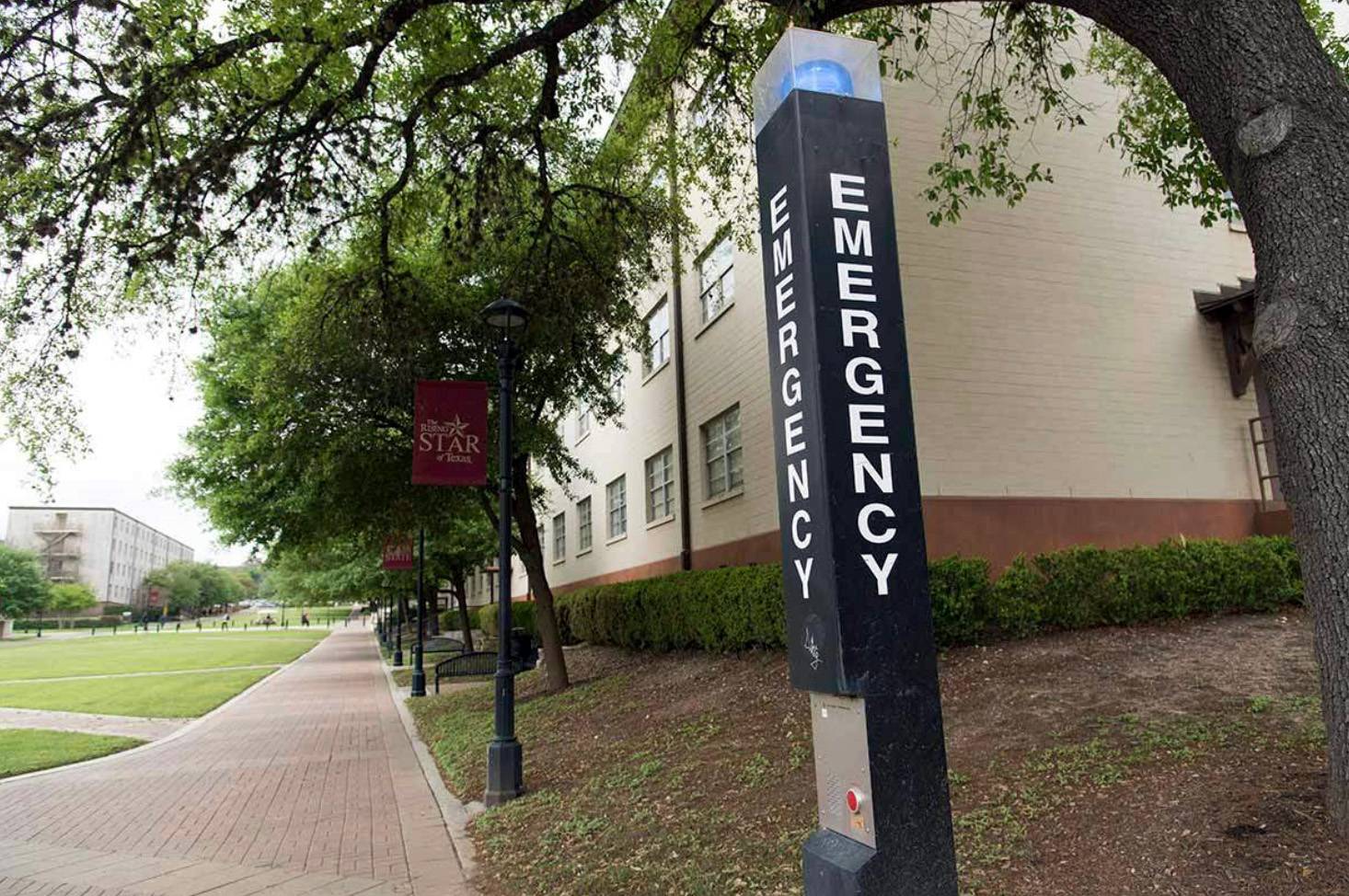
They are a quick way to report an emergency.
Pressing the button on any call box connects you directly to UPD, and shares the box's location. As officers head to the scene, the line stays open so that you can speak with a dispatcher.
If the danger is getting closer, move to another call box — UPD will be able to track this movement and arrive at your current location.
Emergency Alert System
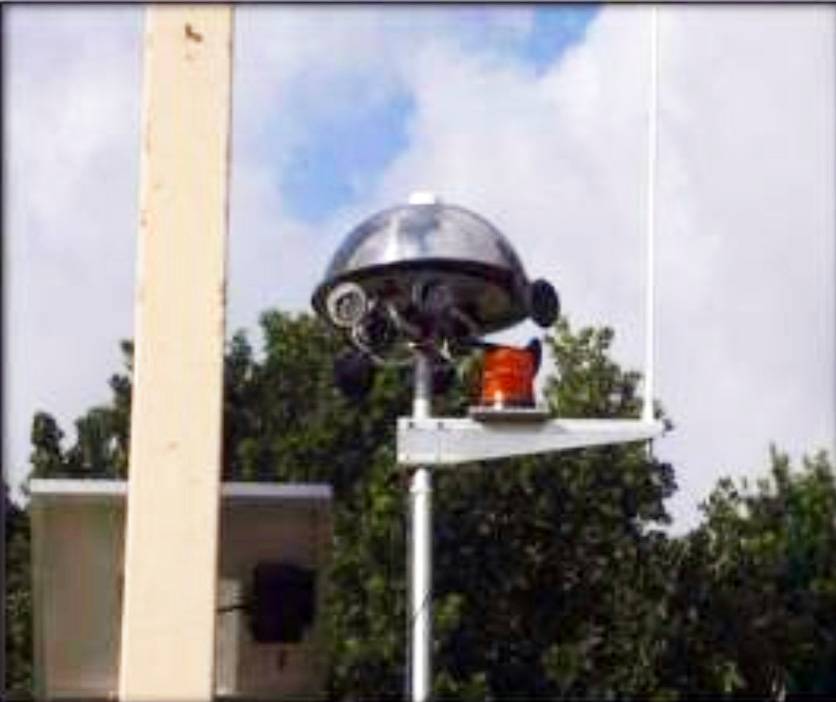
Emergency Notification Alarms
WEATHER ALERT - Two 15 second blasts
Stay indoors
Go to SAFE Zone (stairwells, restrooms, rooms with no windows)
ARMED SHOOTER - One continuous blast for 1 minute
Shelter in place
ALL CLEAR - Three 5 second blasts
Standard Response Protocol
A standard plan of action helps all community members stay safe during an emergency situation. Texas State University maintains a Standard Response Protocol, containing four types of action, to ensure a safe campus environment. Since 2014, all incoming students, faculty and staff have received information about the Standard Response Protocol.
The four actions of the Standard Response Protocol are:
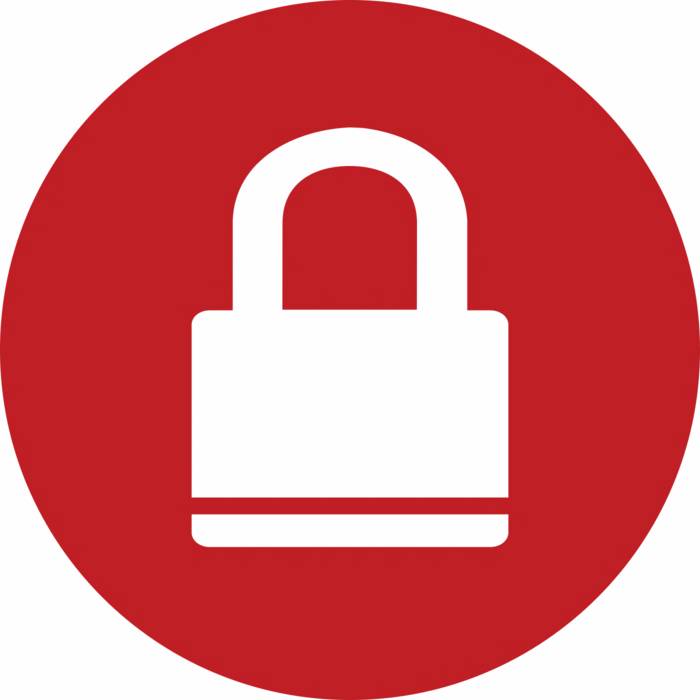 |
Lockdown:
|
 |
Lockout:
|
 |
Evacuate:
|
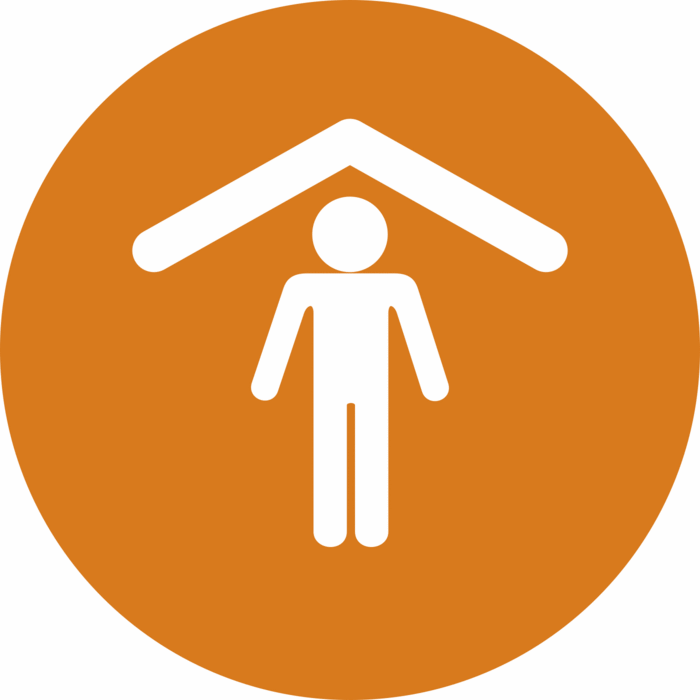 |
Shelter:
|
Safety and Emergency Communications
Weather-related and other emergencies are reported at:
Safety and Emergency Communications.
Emergency Situations
-
Active Shooter
Active Shooter
If you witness an armed individual on campus at any time or an individual who is acting in a hostile or belligerent manner, immediately call 911 or the University Police Department at 512.245.2805.Active Shooter Situation Definition:
An active shooter is a person who appears to be actively engaging in killing or attempting to kill people in a populated area; in most cases, there is no apparent pattern or method to their selection of victims. These situations are dynamic and evolve rapidly, with immediate deployment of law enforcement to stop the shooting and mitigate harm to innocent victims.If an active shooter is outside your building:
- Go to a room that can be locked. Lock the doors and windows, and turn off the lights.
- Get everyone to lie on the floor out of the line of fire.
- Call 911 and inform the operator of the situation. Give your name, location and any other details that can be provided about the shooter(s), if possible.
- Stay at your location until the police or a known university official gives the all clear.
If an active shooter is in your building:
- Determine if the room you are in can be locked. If so, follow instructions above.
- If your room can't be locked, move to a room that can or exit the building only if it is safe to do so.
If an active shooter enters your office or classroom:
- If possible, call 911 and alert the police to the shooter's location; if you can't speak, leave the line open so that the dispatcher can listen and try to pinpoint your location.
- If you can't escape, attempting to overpower the shooter(s) by force is a last resort.
- If the shooter(s) leaves the area, proceed immediately to a safer place, if possible. Do not touch anything that was in the vicinity of the shooter(s).
- If you decide to flee, make sure that you have an escape route or plan in mind. Do not carry anything. Move quickly and quietly, keep your hands visible and follow any instructions given by police officers.
- Do not attempt to remove injured people; tell the authorities of their location as soon as possible.
- Do not leave campus until advised to do so from the police.
What to expect from responding police:
- They will respond to the last area where shots were heard in order to stop the shooting as quickly as possible.
- They will normally be in teams of four and armed with rifles, shotguns, and/or handguns, as well as possibly using tear gas or pepper spray to regain control.
- Try to remain calm and do not be afraid; follow all instructions.
- Put down any bags, packages or other objects and keep your hands visible at all times.
- If you know where the shooter is, inform the officer of their location.
- The first officers to arrive will not respond to or aid those who are injured. Rescue teams and emergency personnel will do so as soon as possible.
- The area will still be a crime scene; police usually will not let anyone leave until the area is secure and all witnesses have been identified and questioned. Stay where you are told until the police dismiss you.
-
Disruptive Individual
Disruptive Individual
If you witness an armed individual on campus at any time or an individual who is acting in a hostile or belligerent manner, immediately call 911 or the University Police Department at 512.245.2805.Disruptive Individual Definition:
- An individual who makes threats of physical harm to you, others, or themselves.
- An individual who has a weapon.
- An individual who behaves in a bizarre manner or exhibits unstable behavior.
- An individual who is intoxicated or under the influence of a controlled substance.
If confronted by the individual:
- Contact the University Police Department (UPD) at 512.245.2805 or call 911.
- Give your name and location with a brief explanation of the situation to the operator.
- Take note of the individual’s age, personal appearance, vehicle, and any other information that would help identify them.
Actions to take:
- Stay calm.
- Sit or stand up straight. Do not slouch.
- Smile and make eye contact.
- Speak clearly and distinctly in a confident, normal tone.
- Do not touch your face. (This may be seen as a sign of aggression.)
- Do not touch the individual, sigh or glare at them, or invade their personal space.
- Use their name, if known, and ask them to sit down.
- Paraphrase what they say so that they know you are listening.
- Offer assistance and explain how you can help, using “we” to include them in the solution process.
- If possible, advise others of the potential problem.
-
Hostage Situation
Hostage Situation
If you see/hear/witness a hostage situation taking place:- Get away from immediate danger.
- Call 911 or notify the UPD at 512.245.2805.
- Provide as much information as possible, for example: location of incident; number of hostage takers and hostages; physical description and names of the hostage takers (if known); any weapons the hostage takers may have; and your name, location and phone number.
If you are taken hostage:
- Remain calm, be polite and cooperate.
- Avoid heroics and acting foolishly.
- Do not try to be a negotiator.
- Do not attempt to escape unless there is an extremely good chance for survival. It is better to be submissive and obey your captor(s).
- Speak normally. Do not complain or become belligerent. Comply with all orders and instructions.
- Do not draw attention to yourself with sudden body movements, comments or hostile looks.
- Carefully observe the captor(s) and try to memorize their physical traits, voice patterns, clothing, and other details that can help provide a description later.
- Avoid getting into political or ideological discussions with your captor(s).
- Try to establish a positive relationship with your captor(s) and get to know them. Captors are generally less likely to harm you if they have a personal connection or respect for you.
- If you are forced to present any type of demands to the authorities, either on tape or in writing, state clearly that the demands are from the captor(s). Avoid making any pleas on your own behalf.
- Try to stay low to the ground or behind cover from windows or doors, if possible.
In a rescue situation:
- Do not run. Drop to the floor and remain still. If that is not possible, keep your hands out and visible, bow your head, and stand still. Make no sudden movements that a tense rescuer may interpret as hostile or threatening.
- Wait for instructions and obey any instructions that you are given.
- Do not be upset, resist or argue if a rescuer isn’t sure whether you are a hostage or a hostage taker.
- Even if you are handcuffed and searched, do not resist. Wait for the confusion to clear.
- You will be taken to a safe area where proper identification and status will be determined.
-
Fire
- Activate the nearest fire alarm.
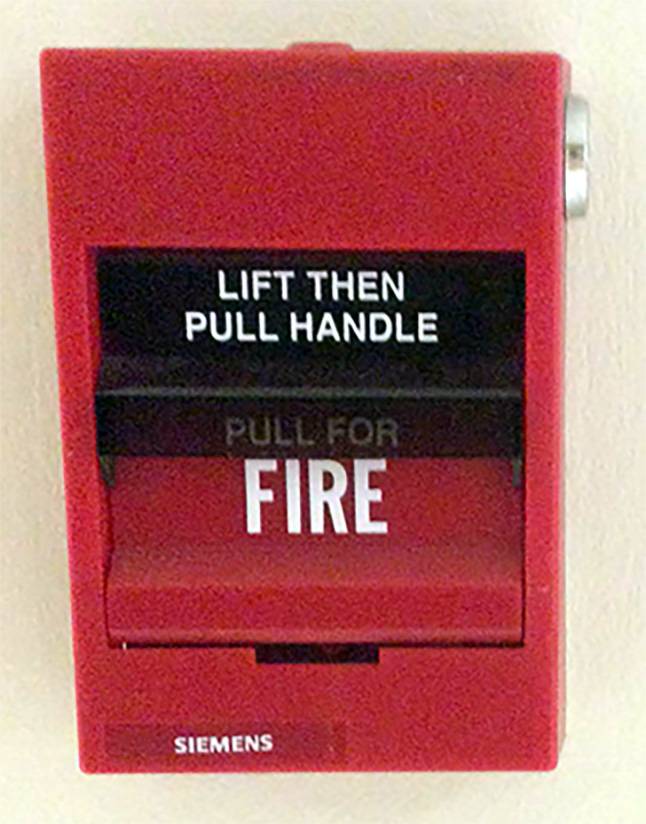
- Regardless of the type of emergency in progress, you may call 911 and/or sound the fire alarm immediately.
- Notify occupants and help those in the immediate area who may need assistance.
- If the fire is small and you have the training, use a proper fire extinguisher to combat the fire.
- Do not endanger yourself or others by trying to extinguish a large, well-developed fire.
- Evacuate the building by the nearest exit.
- Confine the fire by closing, but not locking, as many doors as possible behind you as you exit.
- Do not re-enter the building until permitted to do so by emergency personnel.
- If you are above the ground floor and fire or smoke has restricted the exit routes: remain in the room; place something at the base of the door to prevent the entrance of smoke; call 911 and let them know your location.
Building evacuation procedure:
- Evacuation is mandatory when a fire alarm has been activated.
- Do not use elevators.
- Take personal belongings, such as keys, wallets and purses.
- Close doors as you exit.
- Move people to a safe area away from the building.
- Activate the nearest fire alarm.
-
Tornado
Tornado
Follow the “shelter” actions of the Standard Response Procedure:- Do not assemble in Recital Hall.
- Alert Everyone to Move to 1st Floor.
- Do not assemble in Atrium. There is too much glass.
- 1st floor stairwells are good, but won't protect many.
- Metal Frame Practice Rooms are very safe.
- Stay away from windows.
- Shelter in smaller rooms and inner hallways on 1st floor if able.
- Sit or kneel next to walls.
- If wind and rain is low, you can go to the 1st floor of the parking garage. This is safe. Get between cars.
- Do not leave shelter unless instructed to do so.
-
Bomb Threats
Bomb Threats
Bomb threats and other threats of violence are serious emergencies that required prompt attention. Although bomb threats are rare, they are most likely to occur during final exams. The following sections offer guidance for handling bomb threats.How to Handle a Threatening Phone Call
If you receive a bomb threat over the phone, remain calm and act courteous. If feasible, notify another person to listen on another extension. Take notes on the caller's threat, tone, voice characteristics, and background noise. If the caller seems talkative, ask questions such as the following:- When will the bomb go off?
- How much time remains?
- Where is the bomb located?
- What kind of bomb is it?
- How do you know about this bomb?
- What is your name?
- Do you know there are people in the building who could be hurt or killed?
IMPORTANT!
If you receive a threatening phone call, remain calm and take notes. Try to find out as much as possible about the caller and threat.
-
Use of Fire Extinguisher
Use of Fire Extinguisher
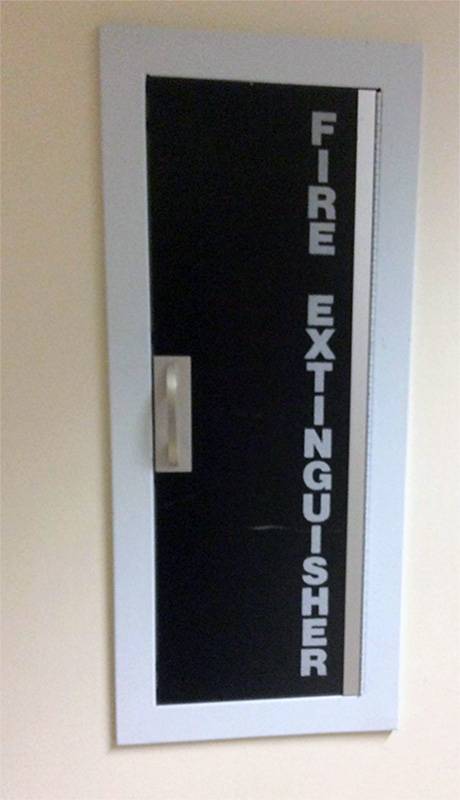
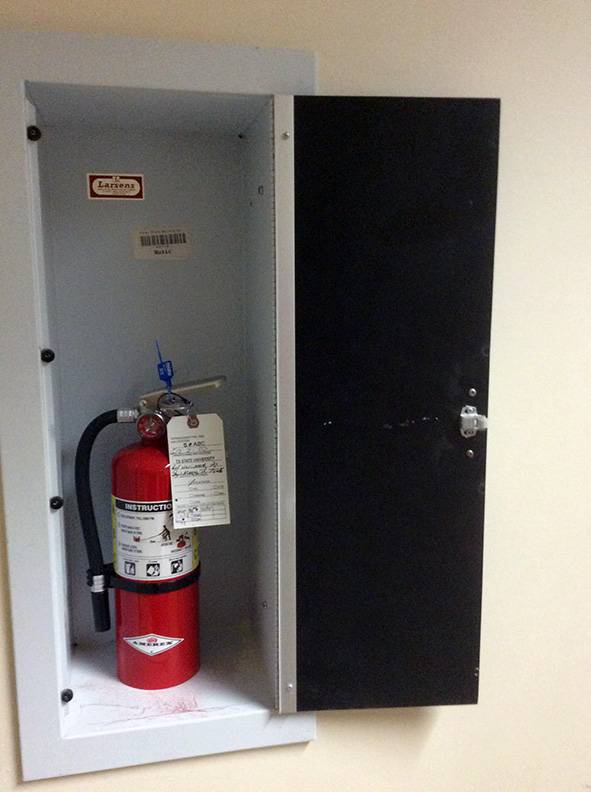
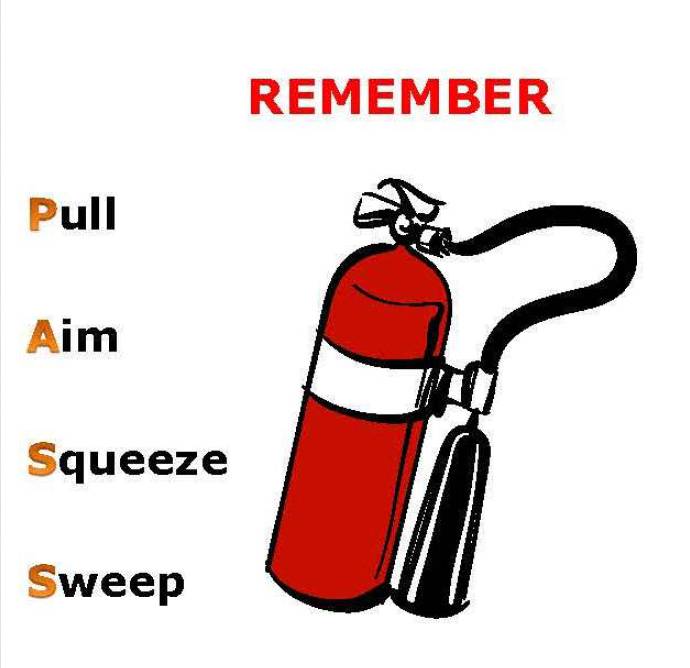 When using a fire extinguisher to fight or control a fire, aim the spray at the base of the fire. Because most extinguishers only work for a short time, employ a sweeping motion and work quickly to control the fire.
When using a fire extinguisher to fight or control a fire, aim the spray at the base of the fire. Because most extinguishers only work for a short time, employ a sweeping motion and work quickly to control the fire.IMPORTANT!
Do not attempt to fight a fire unless it is small and controllable. Use good judgment to determine your capability to fight a fire. When fighting a fire, always maintain an escape route. Never allow a fire to block your egress.more info at: Fire Suppression
-
Rescue and medical assistance requirements
First Aid
First aid training is necessary to prevent and treat sudden illness or accidental injury. The primary objective of first aid is to save lives. This objective is achieved with the following:
♦ Preventing heavy blood loss
♦ Maintaining breathing
♦ Preventing further injury
♦ Preventing shock
♦ Getting the victim to a physician or Emergency Medical Service (EMS)
♦ People who provide first aid must remember the following:
• Avoid panic.
• Inspire confidence.
• Do only what is necessary until professional help is obtained.Student Health Center
The Student Health Center is NOT available to the staff and faculty for treatment of common (minor) injuries occurring in the course and scope of performing your duties. If medical treatment is necessary, contact your supervisor or Workmen’s Comp Specialist to determine which local physician is authorized to handle work related injuries. For personnel with injuries requiring emergency care, versus first aid the university is serviced by both the Hays County and San Marcos Mobile Intensive Care Units (EMS) providing emergency treatment and transport to the Central Texas Medical Center. Call 911 from any telephone to obtain the EMS Service.
Initial First Aid
If you are the first one on the scene of a medical emergency, your first priority is to remain calm. Your action will vary depending upon the nature of the situation, but the following rules apply to any medical emergency:
1. Assess the Situation:
• Can you safely approach the victim? If not, what can you do to help without threatening your own safety?
• Determine what is wrong with the victim.2. Set Priorities:
• Is the victim conscious?
• How serious is the emergency?
• Can someone else call EMS, if necessary? If no one else is available, decide if it is more important to administer first aid immediately or to call EMS and leave the victim unattended.NOTE: Never leave a victim in a life-threatening situation without first trying to help.
Snake Bites
Most snakebites are not fatal. If a snake bite occurs, follow these steps:
1. Have the victim move as little as possible.
2. Apply a constricting bandage (not a tourniquet) between the wound and the heart.
3. If possible, call EMS. In rural locations, transport the victim to the nearest hospital immediately. If necessary and possible, carry the victim to transportation. Do not let the victim walk.
4. If you cannot obtain medical attention:
• Do not make any incisions or suck out the poison.
• Do not cool the bitten area.
• Every fifteen minutes, loosen the constricting bandage for a few seconds and then reapply it.